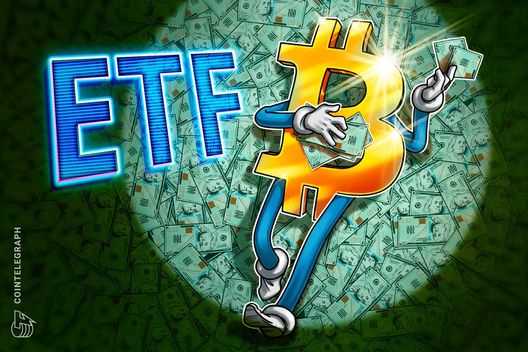In the ever-evolving world of cryptocurrency and precious metals, recent market movements have captured widespread attention. Bitcoin (BTC), the leading cryptocurrency, has experienced a noticeable decline, dropping 2.4% to $121,340. This downturn follows its unsuccessful attempt to breach the critical resistance level of $126,000 earlier this week. The Coindesk 20 Index has similarly slumped over 4% to 4,186 points, reflecting a broader market trend.
The strength of the dollar index, which reached its highest point since early August at 98.90, has exerted downward pressure on USD-denominated assets, including both Bitcoin and gold. Typically, a robust dollar signals challenges for assets priced in U.S. currency, thereby contributing to Bitcoin’s current struggles. Market analyses suggest that there could be more room for decline, with potential levels of $118,000 on the horizon for Bitcoin.
“As U.S.-listed spot ETFs attracted over $3 billion in investments last week, Bitcoin’s momentum has faltered. Gold, however, is on the rise, soaring past $4,000 for the first time, driven by significant inflows into gold ETFs.”
On the other hand, gold continues to thrive despite Bitcoin’s challenges. The metal’s price per ounce has surged, benefiting from a rapid influx of investments into gold-linked exchange-traded funds (ETFs). This uptick in gold ETF holdings has reached unprecedented levels, with analysts noting that there’s still potential for further growth, as current totals remain below 2020’s peak levels. Central bank purchases, driven by a desire to diversify from the U.S. dollar, alongside geopolitical tensions, have also contributed to the bullish sentiment surrounding gold.
Additionally, gold-backed tokens like PAXG and Tether Gold have risen in value, combining to elevate the overall market value of gold tokens to above $3 billion. The contrasting paths of Bitcoin and gold highlight a significant shift in investor sentiment and market dynamics, with gold asserting itself as a stronghold in uncertain economic times.

Bitcoin and Gold Market Dynamics
Key points on the recent market trends affecting Bitcoin (BTC) and Gold (XAU):
- Bitcoin Price Decline: BTC has dropped 2.4% to $121,340 after failing to overcome resistance at $126,000.
- Dollar Index Strength: A rising dollar index (up to 98.90) has negatively impacted USD-denominated assets, including BTC and gold.
- Potential Further Decline: BTC’s price chart indicates a possible decline to $118,000.
- Gold Price Surge: Gold has reached over $4,000 per ounce for the first time, fueled by strong ETF inflows.
- Increased ETF Holdings: Gold-backed ETFs have seen significant growth, with total holdings at their highest since September 2022.
- Central Bank Activity: Central banks are purchasing gold to diversify away from the U.S. dollar, contributing to the price increase.
- Geopolitical Factors: Trade policies and conflicts have added to the bullish momentum for gold prices.
- Growth of Gold-Backed Tokens: Tokens like PAXG and Tether Gold have also surpassed $4,000, with a combined market value over $3 billion.
Investors should monitor these trends as they can influence investment strategies, particularly for those interested in cryptocurrency and precious metals.
Bitcoin and Gold: Divergent Paths Amidst Economic Pressure
The latest movements in the cryptocurrency and precious metals markets reveal a stark contrast between Bitcoin (BTC) and gold (XAU), driven in part by the strengthening dollar. BTC has faced notable pressure, reflecting a decline of 2.4% to $121,340 after failing to break critical resistance levels earlier this week. In contrast, gold has surged past $4,000 per ounce for the first time, buoyed by substantial inflows into its associated ETFs.
Competitive Advantages of Gold: Gold’s enduring appeal is bolstered by its historical status as a safe-haven asset, particularly in volatile economic climates. The recent uptick in ETF inflows signifies growing investor confidence, driven by diversifying strategies away from the dollar amidst geopolitical tensions. This not only strengthens gold’s value but also attracts institutional investors looking for stability.
Disadvantages of Bitcoin: On the other hand, Bitcoin’s recent struggle to maintain momentum amid a rising dollar index poses a challenge. The lack of robust support above $126,000 suggests potential for deeper declines, indicating market uncertainty and volatility that could deter conservative investors. Additionally, the recent pullback may alienate retail investors who are often swayed by short-term price movements.
Who Stands to Benefit or Lose?: Institutional investors and hedge funds might find gold more appealing as a hedge against dollar strength and market volatility. Meanwhile, retail investors previously attracted to Bitcoin may find themselves reconsidering their positions given the current downturn, potentially leading to a migration towards safer investments like gold. Conversely, aggressive traders might still see opportunities in Bitcoin’s volatility but would need to navigate the accompanying risks carefully.

















